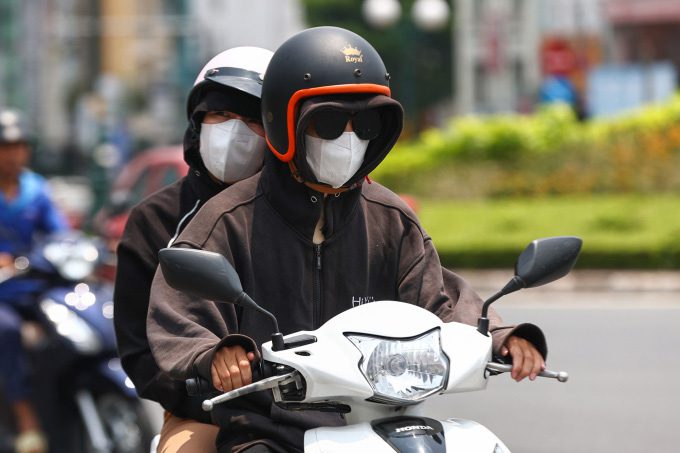Weather Online from the UK and AccuWeather from the US forecast that the ultraviolet (UV) index in Ho Chi Minh City will reach 13—an “extreme” level—until the end of the April 30 holiday.
The temperature in Ho Chi Minh City has ranged from 32 to 36 degrees Celsius in recent days. On the streets, temperatures can be 3-4 degrees higher due to the heat radiated from vehicles and concrete.
Weather Online predicts that the UV index in the city will be between 9 and 12 during the day; AccuWeather forecasts a UV index of 13. These are two of the leading weather forecasting sites in the world today.
The ultraviolet index, or UV index, is an international standard measurement of the strength of ultraviolet radiation from the sun. The higher the UV index, the greater the amount of radiation that can harm the skin and eyes.
According to the U.S. Environmental Protection Agency (EPA), a UV index of 0-2 is considered low. When the UV index is between 7 and 10, skin can quickly become damaged and sunburned within 30-60 minutes. A UV index of 11 or higher is classified as extremely high and dangerous, with a risk of skin and eye burns from just 15 minutes of sun exposure without protection. A UV index of 13 is at the maximum level and extremely dangerous.
Dr. Nguyen Trieu Vu, Head of the Oncology Department at Thu Duc City Hospital, explains that ultraviolet radiation is a component of sunlight. Among these, UVA and UVB rays can damage the DNA in skin cells. UVC rays can cause skin cancer, but fortunately, most of them are blocked by the ozone layer.
The higher the UV index, the greater the risk of bodily harm, which can lead to skin aging, skin cancer, and exacerbation of light-related conditions such as lupus erythematosus and eczema. Ultraviolet rays can also damage vision, leading to cataracts and macular degeneration. The effects of UV rays on the skin and eyes accumulate throughout life.
According to Dr. Phan Minh Doan from the Dermatology Department at Ho Chi Minh City Dermatology Hospital, the intensity of ultraviolet rays can vary by day and season. However, regarding skin health, UV rays can be harmful at any time of the year.
Depending on the level of exposure and the intensity of ultraviolet rays, the skin may exhibit various signs of damage, such as increased oil production leading to acne, sunburn, redness, and skin pigmentation. In more severe cases, skin cancer or skin infections may occur, Dr. Doan noted.

Residents of Ho Chi Minh City in hot weather, April 2023. (Photo: Quynh Tran).
To avoid the effects of ultraviolet rays, the EPA recommends not going outside from 10 AM to 4 PM daily, as this is when UV rays are strongest. When outdoors, protective measures should include wearing hats, sunglasses, using umbrellas, masks, gloves, socks, dark clothing, and staying in the shade. Use sunscreen with an SPF of 30+, reapplying every two hours.
Taking care of the skin during the hot season, maintaining daily hygiene, helps keep skin bright, reduces dullness, and minimizes acne. Use moisturizing cream to help the skin recover and prevent dehydration. Opt for lotion or serum for normal skin, and gel for oily skin types.
If the skin is sunburned, apply cold linen cloths to the affected areas and use soothing products for the skin. If the condition does not improve after a few days of care, consult a dermatologist for evaluation.
Children need special attention to prevent the harmful effects of UV rays. Children’s skin is delicate and more susceptible to damage, while they often play and run outdoors, significantly increasing their risk of skin diseases caused by ultraviolet rays compared to adults.


















































